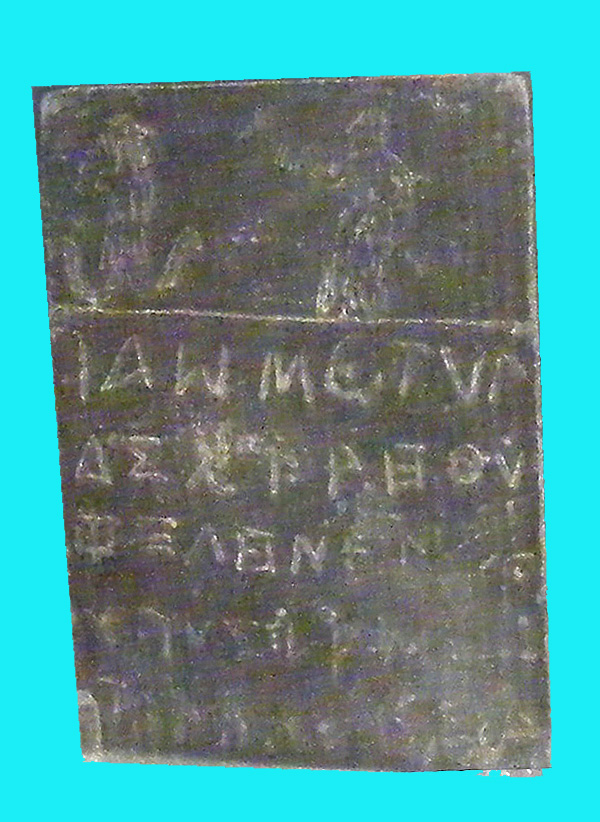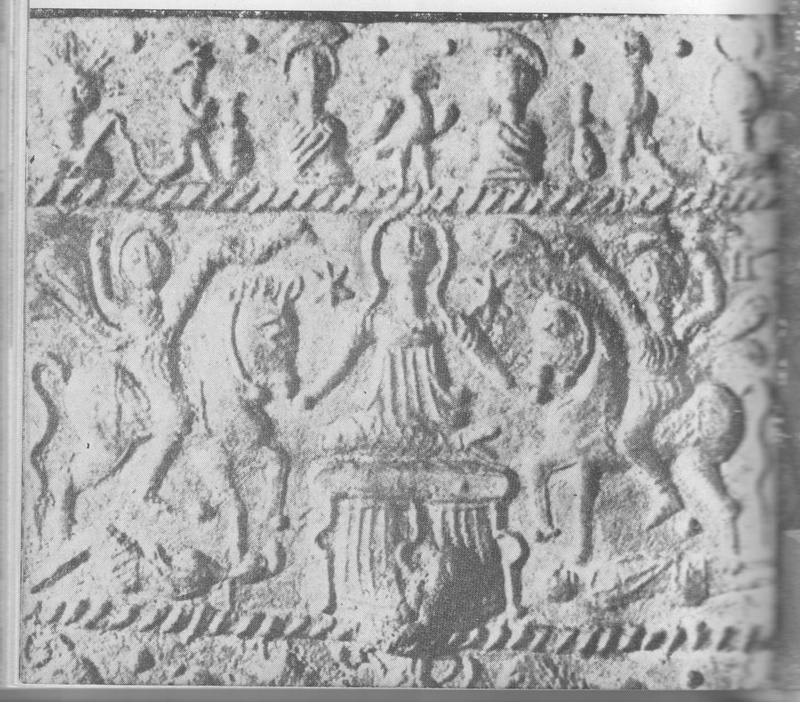
 |
Freethought & Rationalism ArchiveThe archives are read only. |
|
|
#51 | |
|
Veteran Member
Join Date: Jan 2007
Location: Mondcivitan Republic
Posts: 2,550
|
Quote:
I still say that these lamellas are meant to be magical amulets for casting malicious spells (the lead is the tip off). Has anyone noticed that the writing appears raised above the sheet? If this was intended to be read from rear to front as Hebrew books are today, then either it was written on the back of the sheet, left to right with the letters reversed (Michelangelo style) so it can be read in bas relief, or we are reading the backside of it and the letter forms are even weirder than they appear now, a mixture of fonts from paleo Hebrew, Greek and maybe some sort of magical writing (e.g. the "X" with the knobs at the end, unless they are Alephs or Tavs). Later magical amulets like this often did not even attempt to say anything real, just look really cool so the customer felt like they had paid the magician dearly for the "real thing". That there were 70 might suggest a factory setting operated by hucksters. I do not think we have real secret books here. Just spells. A bibliography might include: Sepher Ha-Razim: The Book of the Mysteries (or via: amazon.co.uk), tr. by Michael A Morgan, SBL: 1983. Believed to have originated around the 4th century CE. There are seven mss in Hebrew and numerous translations of it into Latin and Arabic. The Greek Magical Papyri in Translation (or via: amazon.co.uk), ed. by Hans Dieter Betz, U of Chicago: 1986. The spells represent texts dated to late 2nd to early 5th century CE. The Greater Key of Solomon, "Ed." by L W De Laurence, 1914 (but really a pirated edition of Clavicus Salomonis (The Key of Solomon): Translated and edited from manuscripts in the British Museum (or via: amazon.co.uk), by S Liddell MacGregor Mathers, G. Redway: 1889) These are medieval magical texts, often created or copied by Jewish occult figures. de Lawrence was a quack, but Mathers was a bona fide scholar, although devoted to occult subjects Pretty much any book on Mandean/Aramaic Incantation Bowls (suggestion - Ed Yamauchi) or ancient magical amulets in general. All these books include representations of the non standard letter forms and images depicting drawings of people and things in the texts. DCH |
|
|
|
|
|
#52 |
|
Veteran Member
Join Date: Jun 2010
Location: seattle, wa
Posts: 9,337
|
Apparently there are many other metal codices out there from a very early period. Here is one mentioned by R.A. Kraft :
http://ccat.sas.upenn.edu/rak//cours...lCodex-kf.html 
|
|
|
|
|
#53 |
|
Veteran Member
Join Date: Jun 2010
Location: seattle, wa
Posts: 9,337
|
Apparently the manufacture of lead codices was very popular in Dacia as early as the third century
http://www.romanianhistoryandculture...eadtablets.htm 
|
|
|
|
|
#54 | |
|
Veteran Member
Join Date: Jan 2007
Location: Mondcivitan Republic
Posts: 2,550
|
Quote:
The Hebrew letters seem closest, to my untrained eye, to the Paleo-Hebrew letters found on coins of the 2nd revolt. See table V at the end of The Samaritan Pentateuch and the Origin of the Samaritan Sect (or via: amazon.co.uk), by James D Purvis, Harvard UP: 1968. DCH |
|
|
|
|
|
#55 | |
|
Veteran Member
Join Date: Jan 2007
Location: Mondcivitan Republic
Posts: 2,550
|
Quote:
DCH |
|
|
|
|
|
#56 |
|
Veteran Member
Join Date: Jun 2010
Location: seattle, wa
Posts: 9,337
|
Yes but all the 'experts' at Jim West's site have already declared it to be a fake without even having the fucking evidence in their hand! It's ridiculous. I don't know that it is authentic but we've only been looking at the evidence for like 24 hours. What's wrong with people? Is this Access Hollywood? American's Got Scholars? Is there a demand to get a sound bite in before the next novelty act comes on stage? It's unbelievable what a rotten civilization we've become.
I always say to my wife when the old people die off - God knows what's going to happen to the world! This is just spinning out of control. If people can't behave in a rational manner and suspend judgement until all the evidence has come in with regards to something as idiotic as a 'Biblical relic' imagine what they'll do when serious issues like health care, campaign finance reform, the deficit come up. Wait a minute. |
|
|
|
|
#57 | |
|
Regular Member
Join Date: Mar 2008
Location: ucla, southern california
Posts: 140
|
Quote:
i've been rescanning the bar-kokhba revolt coinage and, despite bar-kokhba's obsession with the temple, i am hard-pressed to find a coin with a menorah (or hanukiah) on it. am i missing one? fwiw, i can't recall a lamp on the first revolt coinage either. that would fit with the above comment that it didn't become a prominent symbol until much later. there is the menorah on the antigonas coin, but that's all i can find. also worth noting, do the 8-point stars around the top of the lead text resemble the stars on the reverse of jannaeus' prutoth? |
|
|
|
|
|
#58 | |
|
Veteran Member
Join Date: Jun 2010
Location: seattle, wa
Posts: 9,337
|
Here is what Rachel Hachlili's book says on this question:
Quote:
|
|
|
|
|
|
#59 |
|
Veteran Member
Join Date: Jun 2010
Location: seattle, wa
Posts: 9,337
|
First century menorahs and menorah images on lamps dated from the bar Kochba period in the pages around this link:
http://books.google.com/books?id=TOI...page&q&f=false |
|
|
|
|
#60 | |
|
Veteran Member
Join Date: Jun 2010
Location: seattle, wa
Posts: 9,337
|
The Cambridge History of Judaism: The late Roman-Rabbinic period By William David Davies, Steven T. Katz, Louis Finkelstein offers a possible connection between the lamp
Quote:
|
|
|
|
| Thread Tools | Search this Thread |
|